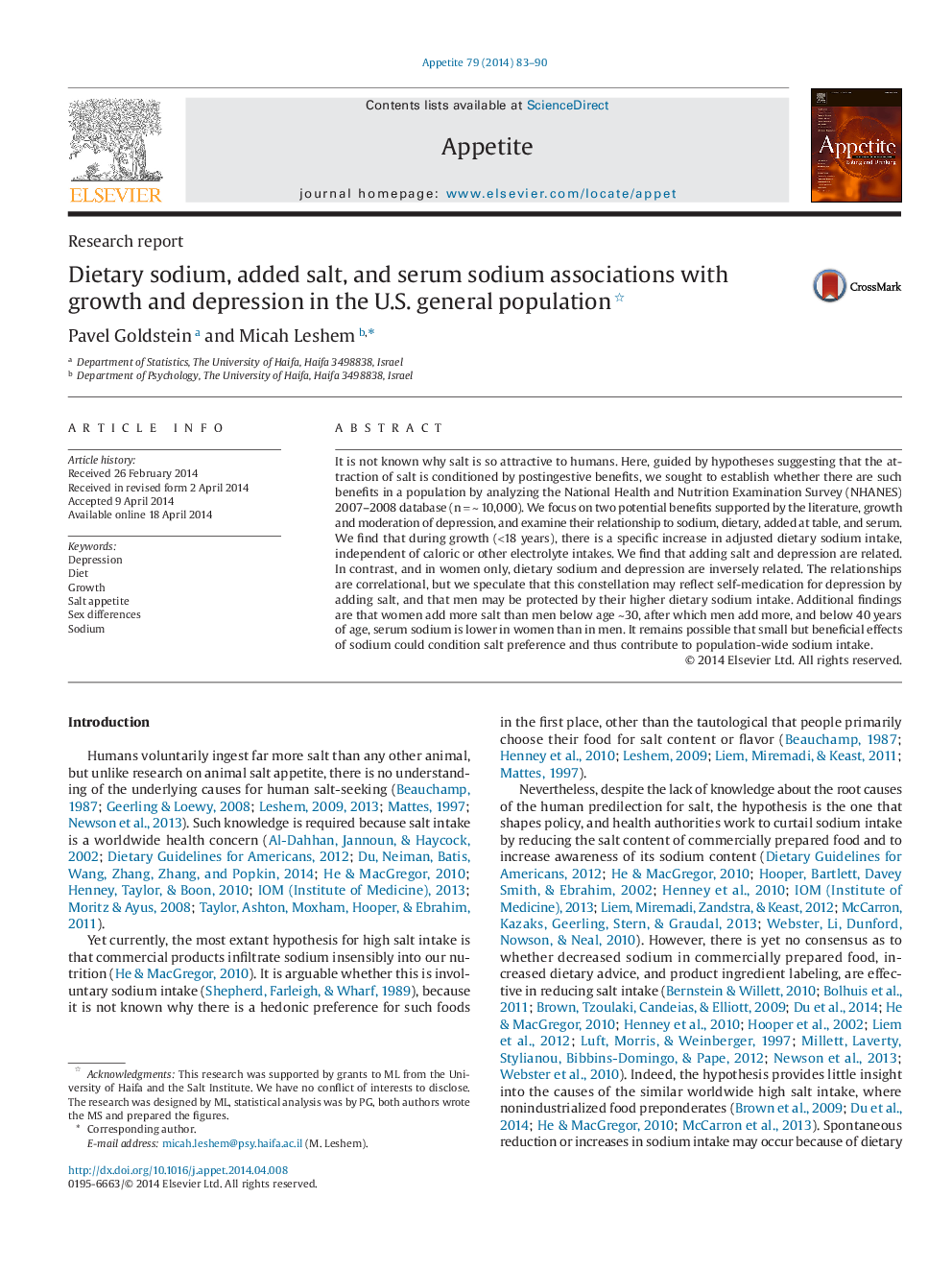| کد مقاله | کد نشریه | سال انتشار | مقاله انگلیسی | نسخه تمام متن |
|---|---|---|---|---|
| 7310001 | 1475401 | 2014 | 8 صفحه PDF | دانلود رایگان |
عنوان انگلیسی مقاله ISI
Dietary sodium, added salt, and serum sodium associations with growth and depression in the U.S. general population
ترجمه فارسی عنوان
سدیم رژیم غذایی، نمک اضافه شده و ترکیبات سدیم سرم با رشد و افسردگی در کل جمعیت ایالات متحده
دانلود مقاله + سفارش ترجمه
دانلود مقاله ISI انگلیسی
رایگان برای ایرانیان
کلمات کلیدی
افسردگی، رژیم غذایی، رشد اشتها نمک، تفاوت های جنسی، سدیم،
موضوعات مرتبط
علوم زیستی و بیوفناوری
علوم کشاورزی و بیولوژیک
دانش تغذیه
چکیده انگلیسی
It is not known why salt is so attractive to humans. Here, guided by hypotheses suggesting that the attraction of salt is conditioned by postingestive benefits, we sought to establish whether there are such benefits in a population by analyzing the National Health and Nutrition Examination Survey (NHANES) 2007-2008 database (nâ=â~â10,000). We focus on two potential benefits supported by the literature, growth and moderation of depression, and examine their relationship to sodium, dietary, added at table, and serum. We find that during growth (<18 years), there is a specific increase in adjusted dietary sodium intake, independent of caloric or other electrolyte intakes. We find that adding salt and depression are related. In contrast, and in women only, dietary sodium and depression are inversely related. The relationships are correlational, but we speculate that this constellation may reflect self-medication for depression by adding salt, and that men may be protected by their higher dietary sodium intake. Additional findings are that women add more salt than men below age ~30, after which men add more, and below 40âyears of age, serum sodium is lower in women than in men. It remains possible that small but beneficial effects of sodium could condition salt preference and thus contribute to population-wide sodium intake.
ناشر
Database: Elsevier - ScienceDirect (ساینس دایرکت)
Journal: Appetite - Volume 79, 1 August 2014, Pages 83-90
Journal: Appetite - Volume 79, 1 August 2014, Pages 83-90
نویسندگان
Pavel Goldstein, Micah Leshem,
